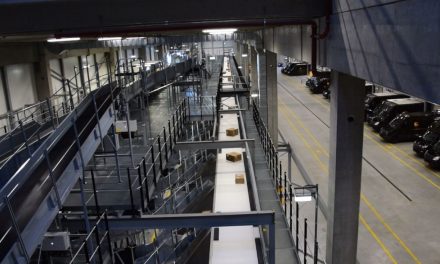
The evolution of change within the DM industry
John Brown – PRESENTATION TO UK MAIL SUMMIT
I want to talk today about the evolution of change within the DM industry and
through that process to try and understand some of the implications that this will have
on the future of Direct Mail. After all, everyone here today has a vested interest in
understanding these issues and the way they may impact on their businesses.
Firstly, what are my credentials for leading this discussion?
For the past 10 years I have worked for the Brann organisation in its various guises.
During that period, the changes that it has gone through will have mirrored those of
the industry in general. However, what differentiates Brann from many other Agency
based businesses is that it has developed its Agency and Marketing Services in
tandem. Controlling the means of delivery was regarded as central to its market
proposition. To the extent that in the last trading year the revenue from the two
business streams was pretty much 50/50%. What is interesting is how that revenue is
made up and how that has changed over the past 10 years.
If we look at what the business looked like 10 years ago you will see a picture of a
business that was developing simultaneously in the areas of data, planning and
creative development and production. This was a time when we built and developed
large databases for clients on platforms that our software engineers developed. These
drove mailing programmes to large segments of these databases that were conceived
and delivered into the mail by Brann out of its base in the Cotswolds at Cirencester.
This was before the days that proprietary software was available for doing even basic
statistical counts or analytical work on data, so again Brann developed its own tools to
enable it to unlock the power of the clients data. As we all know, that model has
changed, many of those large databases were exported back to the clients own IT
departments and we were left to manage those of clients who did not see data
management as one of their core skills. However, we are still managing sizeable
databases for the likes of Consignia, UDV and Microsoft to name a few. Equally,
analytical work that we carry out is just as likely to be carried out on downloads from
the client database.
Mailings sent out were generally two step; there was often activity in other media,
such as inserts and off the page. Typically the call to action would have been a request
for information and the medium of response, a completed coupon. This would then be
data captured and drive the Fulfilment programme. That data could then be used to
profile responders and refine and define future activity.
Levels of activity at this time were relatively low with the average consumer
receiving only 1.6 pieces of Direct Mail per week.
At about the same time Brann were acquiring their first call centre. This provided a
second response channel for consumers to request information, usually at no cost to
themselves. This was very much seen as providing an immediate channel to respond
to DRTV advertising and as a means of uplifting response from traditional channels
through the inclusion of 0800 numbers. So in terms of inbound mail it was not seen at
that time as something that would dramatically reduce volumes.
2
How the business has changed
If we now move on 10 years we can see how the business has changed. The
information technology revolution has changed the way that our clients communicate
with their customers and the channels through which they then respond. The
challenge has been to understand the technology and to manage the process of
integrating the new channels into a seamless process, which ideally provides a onecustomer
view. Better known as Customer relationship management.
Typically, in response to the primary activity we will receive responses in the form of
hard copy, email, via a web site, through the call centre and even by fax. These
responses have to be integrated into one data stream to drive the fulfilment process.
What effect has all this change had on our business? Direct Mail production has
grown but not at the same rate as the growth within the industry as a whole, which has
seen the market double in size in the last 10 years. The solutions that Brann provide
for their clients have to be seen to be media neutral. Therefore the growth within the
company as a whole and the other marketing services in particular, have been
considerable.
Brann in the UK is a £60 million business. 10 years ago production accounted for
nearly 50% of our turnover, today that figure is now closer to 25%. However, we now
have a call centre with 600 seats, a web development business employing 80 people
and a Fulfilment business that has grown in line with the call centre. Client facing
staff have had to develop their knowledge base across all these processes. This is a
pattern that I am sure has been repeated in other integrated businesses.
However, had Brann developed as a stand alone Direct Mail production business we
would still have had to be cognisent of the changing world. The information
revolution would still have happened. However, the World Wide Web was always
better understood within our industry than by the venture capitalists. Rather than a
threat, it was quickly recognised that these trading posts of the ether needed the
support of rather more traditional methods to drive customers to them. This created
enormous activity in the short term and some considerable angst later as many of
these dot coms failed. What we were left with was a channel to market that was
valuable within an integrated approach, particularly in the areas of home shopping
and travel. But by the beginning of 2000 still only 8% of consumers had ever
responded through the internet compared with the 67% who had responded to Direct
Mail at some time. At the same time usage is beginning to accelerate.
Within the same survey was shown that our consumer, who 10 years ago was
receiving 1.6 items a week, was now receiving 9. Marketing Directors were moving
more of their budget below the line. Despite the difficulties following September 11th
and recent problems within the economy we can look forward to further growth.
With that growth will come an increasing responsibility for participating in the control
of the disposal of the material we produce.
3
Waste Control within the Direct Mail Industry
This is not a subject that is going to excite the Marketeers amongst the audience.
However, no debate about the future of Direct Mail would be complete without a look
at the issues surrounding the myths and reality of the waste we create as an industry
and our responsibility for dealing with it.
The reality is that it is estimated that Direct Marketing and promotional material
accounts for 650,000 tonnes of waste a year. It is inevitable that, as an industry, we
will eventually have to bear some of the cost of recovering this. The catalyst for the
current debate was a document from the Department of the Environment, which I am
sure that you have all read titled, Waste Strategy 2000. In this document the Minister,
Michael Meecher, undertook to deal with the issue of ‘Junk Mail’. His term not mine!
This would be either through the implementation of a voluntary agreement or, if
necessary, legislation.
Negotiations have been going on with the Department for nearly a year to reach a
consensus for a voluntary agreement between government and representatives of the
Direct Marketing industry. Agreement is now thought to be close and a code of
practice may be signed in the next few months. Likely partners to that agreement are
going to be the DMA, Consignia, LARAC and The Minister, Michael Meecher. Other
organisations such as the BPIF (British Printing Industries Federation) and various
other paper converters and producers, have also been involved in the discussions.
The Code of Practice will initially centre on making some elements of the printed
output more suitable for recycling. This will include avoiding the use of metal; plastic
pouches and packaging; plastic laminates; CD’s and latex based materials. Given that
latex is used extensively by the paper industry to bind paper coatings this is not as
easy as it may first seem. The responsibility for this will be put upon the specifier, i.e.
the brand owner. Where the Brand Owner has divested this responsibility to his
agency, they will be regarded as the specifier. Although the threat to the producer and
distributor seems to be limited, we remain concerned to ensure any changes to
specification do not effect our capital investments, performance and cost base. Hence
the BPIF’s involvement in the past year.
The agreement is likely to encompass targets for waste recovery. It is possible that
this could be as high as 50% within 5 years, based on the targets applied to the
packaging industry. Half of this would then need to be recycled. At current estimated
usage this would be 325,000 tonnes, whichever way you look at it is an awful lot of
waste.
What are the ways of dealing with this waste?
1. Recycling back into paper based products by newsprint mills, packaging material
mills, tissue products and writing and printing stocks. However, there is finite
demand for this as there are only three Newsprint Mills in the UK.
2. Export, Incineration and Composting:
The critical element for targets within an agreement for recovery and recycling has to
be demand. The DEFRA enquiry to which we are party is currently researching the
forecast demand for each market.
3.The recovery of waste from distributors, householders and ever increasingly,
landfill.
Summary
We are confident that a Voluntary Agreement with Government for recovery and
recycling will be achieved and will include the following elements:
1. A formal producer responsibility and code of practice.
2. Targets to an agreed timescale for the recovery and recycling of waste
3. A planned reduction in the use of materials which restrict recycling
4. Pressure on specifiers to use recycled materials
5. A monitoring process to police agreement.
I have just returned from visiting a newly built de-inking plant in France that produces
a pulp suitable for inclusion in wood free grades of paper. This was not something
that was previously achievable. However, like most projects in the paper making
industry it comes at a cost and the capital outlay on this new plant was £60 million. It
is also at risk from the vagaries of the international pulp market, where commonly the
price of virgin pulp will trade within a wide range. Will the market stand a premium
for recycled products?
These issues of disposal will not make the problem go away. I think that the process
of negotiation has helped in increasing the governments understanding of our
industry. Initially, it was seen as a soft target and we know from our own surveys that
Direct Mail is not universally popular. However, there is now recognition that we are
a valuable industry employing a lot of people and worth 1.2 billion in production
alone. Some of the emotive vernacular has disappeared. You will be relieved to hear
that we are now merely purveyors of unsolicited mail! It will be in everyone’s interest
to have a voluntary code rather than to have more draconian measures imposed by
Government













